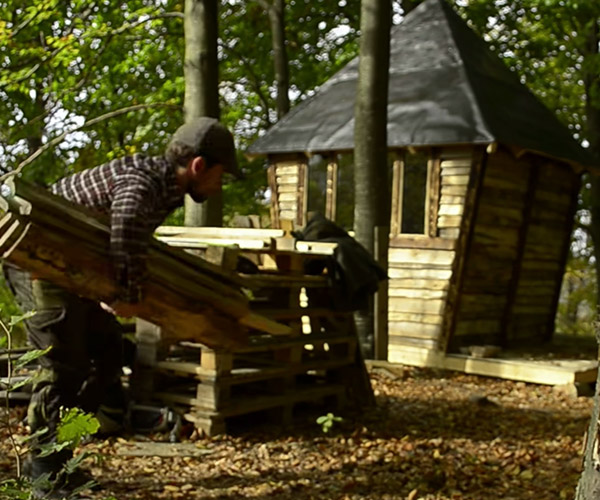https://static1.makeuseofimages.com/wordpress/wp-content/uploads/2021/11/Data-Visualization-Methods-Featured-Image.jpeg
Professional data analysts use data visualization techniques like graphs, charts, and maps to create reports from numerical data. These visual elements help others understand the patterns, trends, and outliers in any data set.
By knowing and applying the best data visualization techniques, you can also enhance your project reports. Read on to become your own data analyst or learn more about the mathematical visualization of data.
1. Choropleth Map
You can use a choropleth map to visualize geographical location-related data. You’ll need to use a color gradient to show the decreasing or increasing data values as the color fades or deepens.
This data visualization technique enables you to see the change of data variables from one region to another. You can use this technique to visualize population density, employment rate, etc. If you want to find out the country-wise consumption of your services or content, this technique is also useful.
You’ll find the Google Data Studio Geo Chart element handy for creating choropleth maps. You can add your data to Google Sheets and then import that to the Google Data Studio to create different views of your choropleth map. Furthermore, you’ll also get an interactive graphic that shows the underlying data when you hover your mouse cursor over any region of the map.
2. Bar Chart
Bar charts are crucial to visualize data comparisons between multiple components of the data. For example, comparing revenue from financial quarters or years is the most common application.
You need to place the categories that you want to compare on one axis. On the other axis, you need to keep the measured values. Depending on the values of this second axis, the length of the bars will vary.
You can make your bar charts more informative by adding different colors, 3D effects, legends, interactive data views, etc. Google Data Studio offers you multiple forms of bar charts. You can choose from column/stacked column, bar/stacked bar, etc.
3. 3D Maps
3D maps are essentially charts made of bars or columns on a geographical map. You could use this type of chart to flaunt your knack for tech when presenting reports to the audience. 3D maps are ideal for data sets related to products, services, or population data that links a specific region on the globe.
Microsoft Excel has an elaborate feature for creating such cool pictorial data visualizations. It’s called Microsoft 3D Maps. You’ll find it on the Insert tab of the Excel ribbon.
4. Sankey Diagram
This data visualization technique is appropriate to show how data flows. A plain text or rectangle box represents the entities or nodes of your data set. Arcs or arrows of different widths represent the link between the above nodes.
The width of the arrows or arcs is directly proportional to the importance of the data flow. Therefore, this chart is helpful to visualize large data sets related to the flow of resources like energy, money, time, etc., in a project.
5. Network Graphs
You can show the relationship between multiple entities by creating a network graph. On a network graph, nodes or vertices represent each entity. Edges or links represent the connection between these nodes.
You can use network graphs to find patterns, anomalies, and insights from large data sets that connect multiple entities. Alternatively, you can use a network graph to resolve any bottleneck around project tasks and subtasks by linking all resources and statuses.
6. Timeline Charts
Timeline charts help you visualize events or tasks in chronological order. It has wide applications in managing multiple tasks and projects. The involved persons can effortlessly identify project progress or bottlenecks when you visualize task-related data in timeline charts.
Typically, timeline charts are linear. The key events, tasks, and subtasks show up on the axis. You can also make your timelines more attractive by inserting graphics, thumbnail-view of documents, linked resources, milestones, deadlines, etc.
Gantt charts are streamlined timeline charts. You’ll find many free-to-use Gantt chart templates in the Microsft Excel templates library. You may select any template that matches your project and tweak that a bit to make comprehensive project timelines.
Related: How to Make a Scatter Plot in Excel and Present Your Data
7. Treemap Chart
Treemap chart comes from the renowned information visualization and computing method treemapping. Visualization of large hierarchical data sets takes place on nested rectangles. Your data looks highly organized in branches and sub-branches.
You need a data set with two quantitative values for each product or service because the rectangles visualize two data values. A treemap chart is ideal for visualizing a massive data set with many attributes on one screen.
The color and dimension of each rectangle are directly related to the underlying values. Therefore, spotting anomalies or patterns becomes truly easy if you create treemaps for large data sets.
8. Spiral Chart
Spiral charts efficiently visualize large data sets on a single screen. You can show the underlying data as points, columns, or lines. You can also color code the data for easy visualization.
Typically, you need to put the start point of your data at the center of the spiral and move outward as your data grows. Spiral plots are ideal for visualizing the following data: yearly student attendance, employee attendance, products sold, website traffic, etc.
9. Pyramid Chart
Pyramid charts are ideal if you need to visualize data sets in a hierarchy. You’ll see different pyramid charts with a lot of visual effects. However, it’s simply a triangle with different sections separated by lines.
These separated sections of the triangle usually have different heights and widths. The value of the underlying data defines the volume of the separated sections. Usually, the high volume or wider sections should contain a general topic.
The section with the least volume should contain a niche topic from the general topic sitting at the bottom. You can create pyramid charts to better understand your business model, products sold, customer segment, etc.
Get Valuable Insights From Your Data
These are the commonly used data visualization techniques that cover a wide variety of data sets. You can easily create any of the above charts or graphs by practicing a few times. If you’re a learner, these are the appropriate mathematical data interpretation techniques to get started.
While you’re applying the above techniques in your work or school, also know that Google Data Studio helps you make great data visualizations in a few clicks.
Want to impress your audience with actionable data insights and compelling visualizations? Check out these Google Data Studio features.
Read Next
About The Author
Tamal Das
(211 Articles Published)
Tamal is a freelance writer at MakeUseOf. After gaining substantial experience in technology, finance, and business processes in his previous job in an IT consulting company, he adopted writing as a full-time profession 3 years ago. While not writing about productivity and the latest tech news, he loves to play Splinter Cell and binge-watch Netflix/ Prime Video.
MUO – Feed





